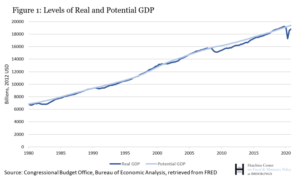If you found this post via search, it probably makes sense to start with the first post in this series on the cost of shipping. The link to the full series is both above, and here.
If actual shipping costs are not public information, how can I lookup shipping costs online?
When you look up cargo shipping costs, what you see is the market forecast of a spot rate.
Some of the contracts are pegged to that index, some are not.
And there is a question as to what information an index like this has.
You may have some players in the industry who want this information to get out, about what they actually are paying for freight, you have some players in the industry who don’t want it to get out.
As is the case with many other traded commodities, many of the transactions occur in private, and what is known in the public sphere is not the full story.
We don’t really know what the actual prices are or were.
How difficult is it now to get ships that are “out of position” in the global supply chain, back to where they need to be?
There are a couple of things that make these large container ships not very flexible.
One is that these big ships don’t necessarily fit at all ports.
On some routes, there’s simply not enough demand to handle a ship that can carry 10,000 containers.
Or perhaps the harbour in some places isn’t deep enough to handle that ship.
And so a ship that can serve one route may not be able to serve another route profitably.
The other factor to understand here is that no one in the container shipping business sends out “a ship”.
When a ship line is offering a route, it’s offering a regular service.
So, every Tuesday, for example, there will be a ship that leaves Qingdao in China and it will stop in this place, and that place and Singapore so many days later, and it will stop in Algeciras Spain so many days later, and eventually, so many days later it will end up in Rotterdam.
And it will do that on the same day every week.
It will be a ship of the same design every week, in most cases.
This is called “a string” in the shipping industry.
And so, if you have a ship that sails between China and Rotterdam every Tuesday, you’re probably going to have seven or eight versions of the same ship about the same size ready to go on that day, trying to keep on that schedule.
This means if one or two or three of them are out of position, it takes a while to get back on that regular rotation.
You can’t just put any old ship on that run because that’s not what the traffic requires.
Coordinating this is quite a task.
Typically these days ships are built with the idea that they will be used on a specific route.
And so you don’t want to just plug them in anywhere.
Is there likely to be a long-term sustained capacity shortage?
The capacity shortage, such as it is, comes from the fact that you’ve really only got these three alliances [ship line groups] so people are not building so many ships now because they don’t have to worry about their competitors so much.
I think though that longer-term, the concerns are actually in the other direction.
We had for many many years international trade growing twice as fast as the world economy.
Since 2008, international trade has grown more slowly than the world economy, and I think that’s going to continue, and I think the growth of international trade is going to slow down even more.
And that means that we have the prospect of overcapacity returning, as the pandemic recedes.
I think there are a couple of reasons for this in the long run.
One is that we’ve got demographics.
In a world in which most countries, except for Africa, are filling up with older people, there is less demand for physical products.
People are spending more and more of their money on services, and I think that’s really going to affect the amount of trade in physical goods over the long run.
You’re seeing a lot of manufacturers and retailers change their sourcing decisions, in ways that will affect the demand for container shipping.
One of the things I write about is that there was a lot of misjudgment of risk in globalization.
A lot of companies looked at production costs and transport costs and concluded they needed to make things in China.
People have now taken risks onboard.
They understand that risks need to be factored into their calculations because if the goods don’t arrive on time, it can really be very bad for their bottom line and it can harm their reputation in the long term.
Many companies are now starting to diversify.
There’s a lot of talk in the states about “re-shoring”.
It’s not exactly re-shoring though. What’s going on is redundancy.
Firms are concerned about making a product only in one place, being reliant only on one supplier, or one ship line, or on one port.
And so, people are looking for options in case something goes wrong somewhere.
This raises production costs a little bit, but provides better insurance, effectively, in case there’s a fire, a hurricane, a strike, a ship sinks, whatever the issue is.
The other big thing we’ve got coming along is a concern about climate change and as the costs of making production and transportation more sustainable begin to be felt, that’s going to raise the cost of international shipping and domestic freight transportation, and this will make long-distance value chains more costly to operate.
Select “Next Post” below for the next post in the series.



